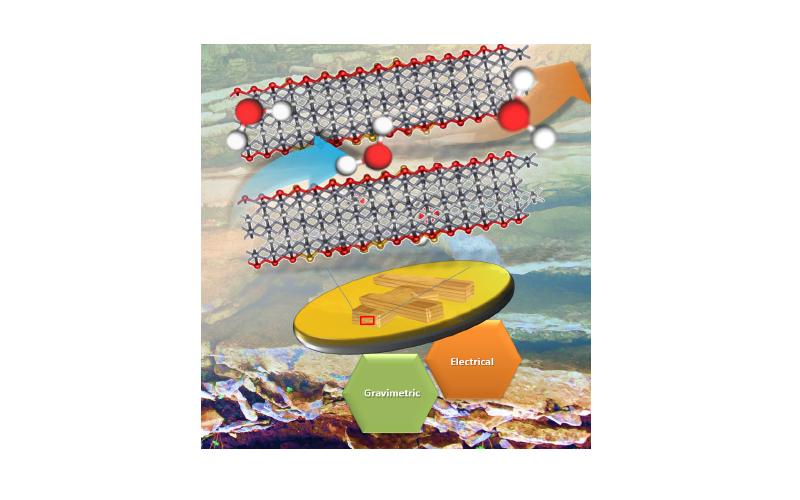
Water sorption-desorption process in between two-dimensional MXene flakes. The water adsorption leads to swelling of the MXene film which is detected through changes in electrical properties and the resonance frequency of an acoustic crystal.
Scientific Achievement
An efficient method based on 2D MXenes that detects water vapor at a very low detection limit of <0.1%RH and exceeds performance (detection range, sensitivity and power) of other 2D-materials.
Significance and Impact
Ultrasensitive detection of water vapor in a wide 0.1%–95% relative humidity (RH) range is important to predict swelling in energy storage devices, critical for safe operation.
Research Details
– 2D Ti3C2 MXene films were deposited on the surface of an acoustic sensor and interdigitated electrodes
– Gravimetric, direct-current electrical, and electrical impedance sensing modes were used to measure the response of the MXene film to water vapor pressures spanning 3 orders of magnitude (20 mTorr–20 Torr).


